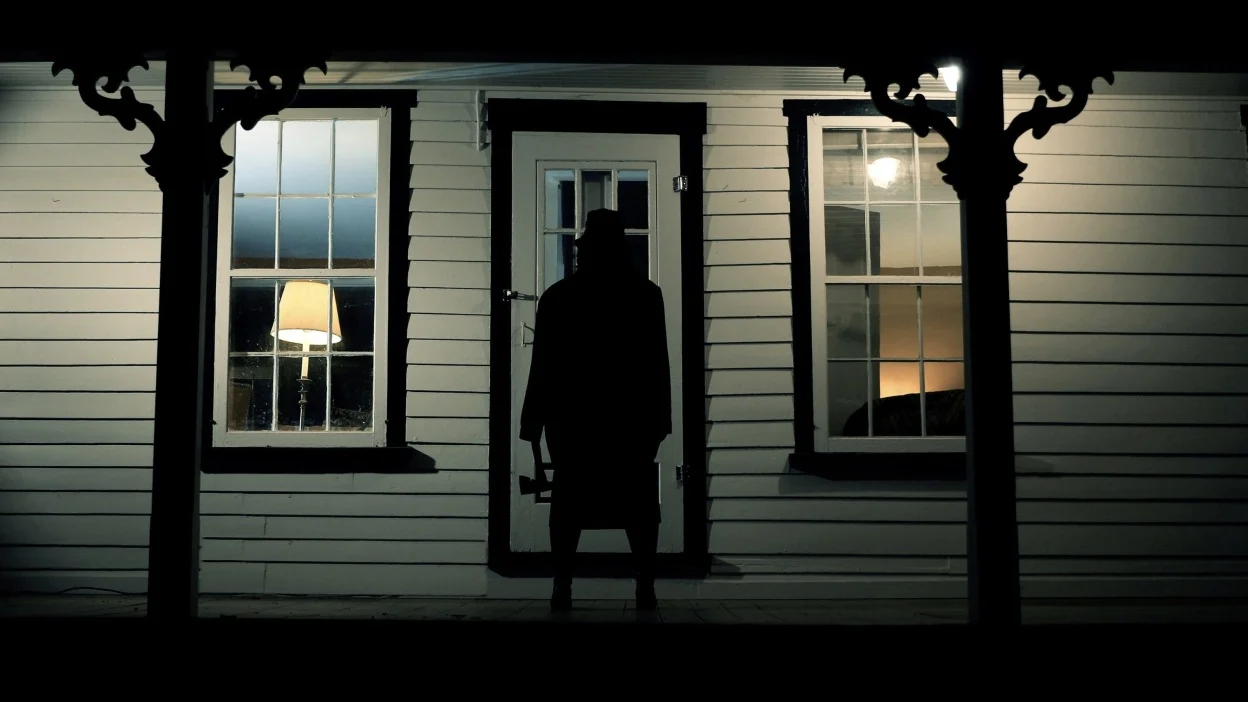

The corruption of the bonds of family has long been a source of horror in film. Whether it be the Sawyers in the Texas Chainsaw films, Papa Jupiter’s family in The Hills Have Eyes, or even Max and the vampires in The Lost Boys, the concept of a family gone wrong is something that is if not out and out horrific at the very least unsettling. The Adams Family’s newest production, Where The Devil Roams, is a more restrained but no less effective look at this idea.
Where The Devil Roams is the story of Maggie, Seven, and Eve (played by the real life family behind the film, Toby Poser, her husband John Adams, and their daughter Zelda), a family of sideshow performers in the Catskills in the 1920s. Times are hard, and are about to get harder when a unscrupulous businessman purchases the land the sideshow resides on. Soon, the trio embark on a murderous road trip throughout the region, exacting a bloody brand of populist justice upon the elites of the region. It’s bleak and gory, but it’s also a tragic and sometimes tender story of generational trauma and PTSD. Through all of this straight up mayhem is a subtle core of magic, with a fellow sideshow performer providing the source of the titular devil. Our trio’s nightmare road trip quickly spirals out of control and veers into uncontainable chaos as the bonds of family are put to the test against death itself.

Visually, this film is incredibly bleak. Through a combination of washed out and overcast landscapes and clever period appropriate scratching of the film (and some much-appreciated whirling towards the viewer newspaper wipes during the murder montage), the Adams’ successfully achieve a look that doesn’t offer much, if any, hope for a better future. Much of the film seems to take place in the aftermath of a rainstorm, with mud and dripping water everywhere. Everything looks used and past its prime, be it sideshow tents and placards of the people themselves. Taken any further it would seem almost like a caricature of a film taking place immediately in the path of the Great Depression, but it never quite hits a cartoonish level of bleakness. It’s probably the setting of a sideshow that brings such a comparison to mind, but visually it reminded me a lot of Tod Browning’s Freaks, or even some of the expressionist aspects of Nosferatu.

The Adams’ do a spectacular job of bringing to life the idea of family gone wrong. Seven and Maggie are very clearly in love and equally as clearly love their daughter. There is nothing sinister or unwholesome about their familial unit. It’s cliche but clearly all they really need is each other to make it through the cruel times they are facing. And yet they are just as bonded to one another by acts of violence inflicted upon the world outside of that unit as they are through the love they have for another. It’s that perversion, that bonding through violence, that eventually proves to be the undoing of their familial unit, literally ultimately dissolving it.

A major theme of this movie is the concept of things (and people) being perceived as or actually being broken, defective, cast aside, or just…different. The setting of a sideshow is a perfect example of the outcast as a central character: we have several heavily tattooed performers and barkers, clowns that despite being “normal” people are clearly not fit for mainstream society, and a man whose act is cutting his own fingers off and reattaching them through less than godly means. A poem that serves as the source of the title is an examination of how imperfection is seen as the work of the devil. Maggie’s murderous past, revealed in the shockingly effective opening scene, is something that continues to hang over her, be it through her own violent temper or her inability to connect with anyone outside of the sideshow. Most fascinating, however, is the character Seven’s cross to bear. Initially a self-described lowly country doctor “one step above a veterinarian”, it’s revealed that he was a medic in WWI who bore witness to events so horrifying and unspeakable the sight of blood now sends him into a near catatonic trance, necessitating him to be blindfolded whenever Maggie engages in acts of violence. John Adams flawlessly gives Seven the look of a man so fucked by what he has seen he must literally blind himself to what is before him now. It’s haunting and utterly wonderful to witness.
Where The Devil Roams is, at its core, a story as much about the process of something breaking as it is about something being broken. Whether it’s the slow destruction of society economically on a macro level or the disintegration of family on a micro level, this film invites us to witness both. There’s blood and gore, sure, but there’s also a lot of heart in there too (literally and figuratively) and ultimately there’s a story about persistence in the face of certain dissolution.




